Inside Mosul, Iraq’s second largest city, the gleams of a once vibrant and beautiful metropolis strive to shine through its bombed-out structures. In October 2016, two years after the Islamic State (ISIS) took control of the city, a US-led group military offensive was carried out to take him back from the terrorist group. The city and its residents have experienced one of the deadliest urban battles since World War II, and nothing was spared during the military onslaught that lasted nearly a year.
Much of Mosul’s old city was destroyed. The aftermath is a haunting sight: once grand historic buildings are further crumbled, the facades of most structures are riddled with bullet holes and bombed-out empty buildings line every street. While Mosul and its people will never be the same, reconstruction efforts are underway by international groups.
One such building that has been given new life is the Mosul Cultural Museum. The second largest encyclopedic institution in Iraq after the National Museum in Baghdad, the Mosul Cultural Museum was inaugurated by King Faisal II in 1952 to tell the story of northern Iraq. The collection inside was of global significance, encompassing artifacts from prehistory, Assyria, Hatra and Islam.
But when Islamic State took control of Mosul in 2014, the museum was targeted and its artifacts either destroyed or looted. Major Assyrian monuments that were damaged by the extremist group include a colossal lion of Nimrud, two Lamassu guardian figures, the important banquet stele and throne base of King Ashurnazirpal II. More than 28,000 rare books and manuscripts were burned.
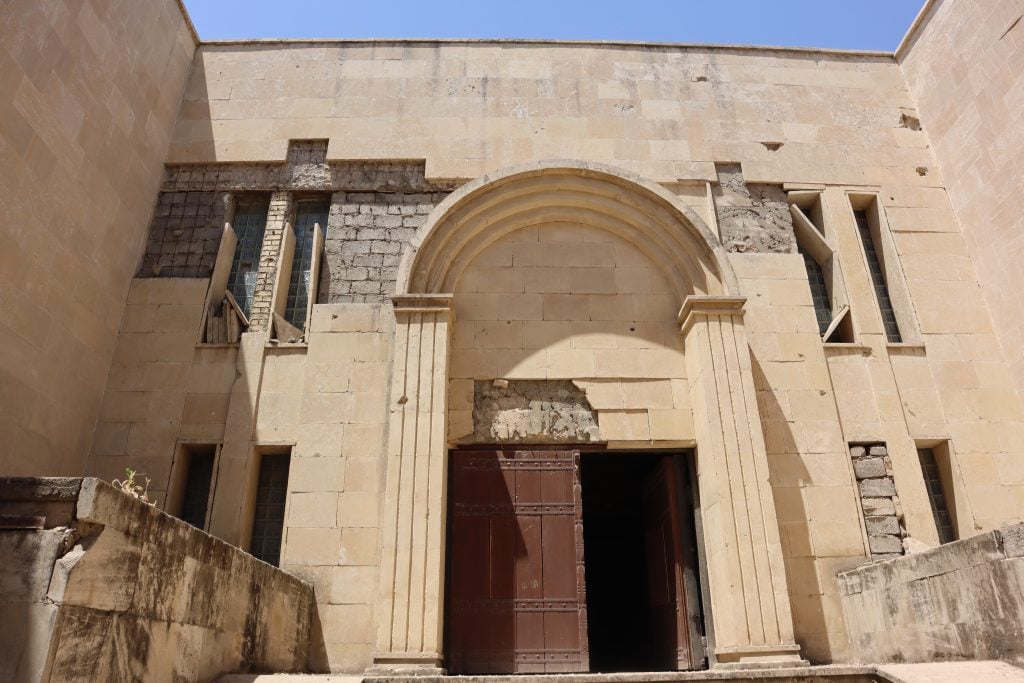
The damaged entrance to the Mosul Cultural Museum in 2021. Photo: Courtesy of Mosul Cultural Museum.
In a video released by ISIS in 2015, the group destroyed antiquities in the museum while an ISIS preacher said, “We are ridding the world of polytheism and spreading monotheism on the planet.” Militants destroyed the statuary of the city of Hatra in the 2nd century with maces.
In the Assyrian Gallery, the part of the museum that suffered the most damage in the Islamic State attack, the group placed dynamite under a ninth-century BCE platform for a carved stone with complex cuneiform script. He was torn to pieces.
“By destroying this museum, ISIS was trying to destroy the memory of the Iraqi people,” Zaid Ghazi Saadallah, director of the Mosul Cultural Museum, told Artnet News.
Now signs of reconstruction can be found in and around the museum, as it prepares to fully reopen to Mosul residents in 2026. As Saadallah walked through the museum, he waved at parties of it which had been entirely rebuilt, other parts being restored and still others which will bear the scars of the war.
In the Assyrian room, a large gaping crater where IS detonated the bomb remains in the ground. Its jagged edges look almost fresh – and that’s how the people of Mosul want it to stay. When the museum reopens, the memory of the devastating attack will be preserved. Visitors will be able to view it from the mezzanine above, now a metaphorical wound that has become a shrine filled with light. “IS also wanted to destroy the memory of the world – these artifacts are part of world history,” Saadallah said.
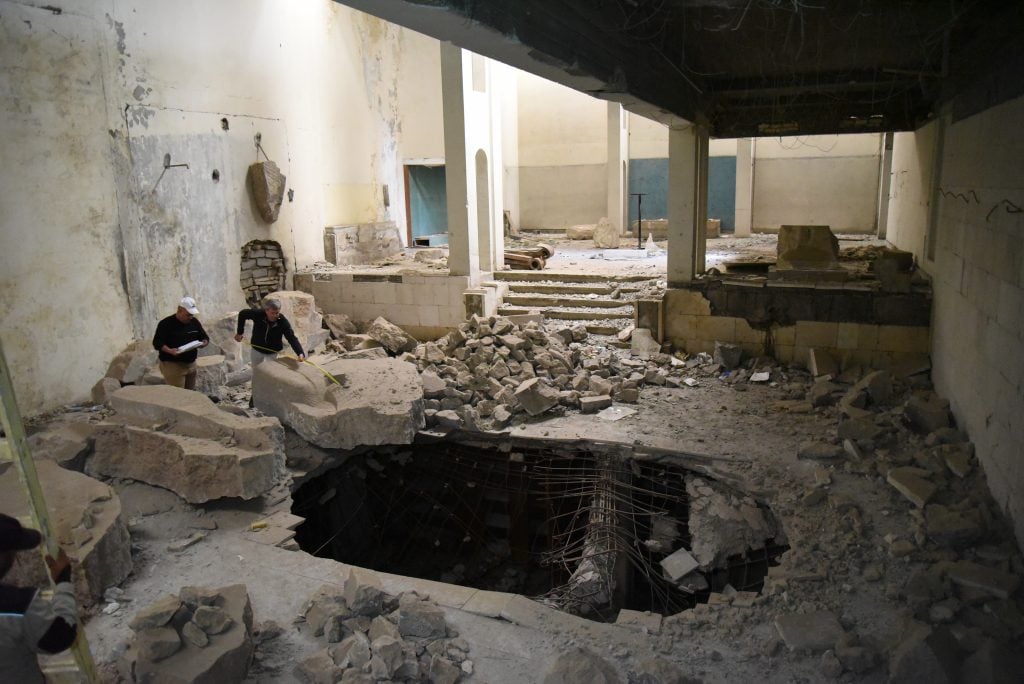
Mosul Cultural Museum staff document damage to the Assyrian Hall in 2019. Photo: Courtesy of Mosul Cultural Museum
“Iraqi heritage is important to the world,” said Laith Hussein, director of the Iraqi State Board of Antiquities and Heritage (SBAH). told Artnet News. His agency, which is part of the country’s Ministry of Culture, oversees the restoration project alongside the Louvre Museum, the Smithsonian Institution and the World Monuments Fund, with funding and support from the International Alliance for the Protection of Heritage in Conflict Zones (ALIPH).
“Many important pieces of the Mosul Cultural Museum were damaged and stolen by ISIS. Now many international organizations are helping us to find and return the artifacts.” Hussein said the objects will eventually be displayed “where they belong”.
In May, in the nearby recently restored Royal Hall, the museum opened a month-long exhibition, “The Mosul Cultural Museum: From Destruction to Rehabilitation,” the first showcase of artifacts from its collection since the war.
When the museum fully reopens, many of the items on display will be those that were saved from destruction when they were transferred to the National Museum in Baghdad before the start of the Iraq war in 2003. These items remain in storage for the time being, for save further plunder. Additionally, the gallery spaces will exhibit artifacts from ongoing archaeological digs in Nineveh and pieces that have been restored by the Louvre’s conservation team.
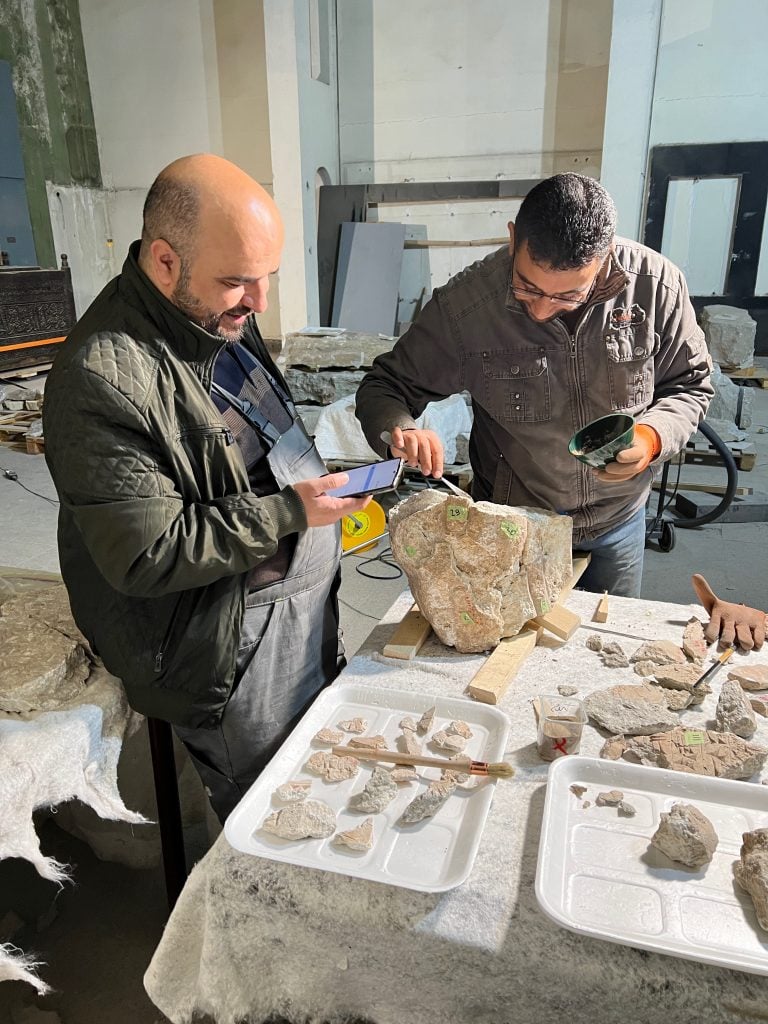
Artifacts are documented and inventoried by museum staff in 2022. Photo: Courtesy of Mosul Cultural Museum.
“The city of Mosul is crucial to understanding world history,” added Tanvir Hassan, director and vice president of architectural firm Donald Insall Associates, which is leading the restoration of the museum building. “It is the Assyrian capital of the world. All of our genesis and understanding of history begins here along the Tigris and Euphrates, the Fertile Crescent. It is the basket of civilization as we know it.
Mosul’s rich heritage has led to the creation of other local museums, such as the archaeological site of Nineveh, built in 1956 during the restoration of the Nergal Gate.
But the Mosul Cultural Museum, which opened to the public in 1974, was different. It was designed by Iraq’s leading modernist architect of the time, Mohamed Makiya, at the height of his career. “He was an important figure in forging a modern identity for Iraq,” Hassan said. “Through its architectural design, Makiya incorporated Assyrian aesthetics into a modern white box structure.” The new museum is rebuilt according to Makiya’s original plan.

The construction of the Mosul Cultural Museum is completed (1972). Photo: Courtesy of Mosul Cultural Museum
Challenges to rebuilding Mosul remain. While the few remaining ISIS cells are now largely in rural areas, there have been a few kidnapping attempts near Mosul in recent years. And despite a period of relative stability on the ground, Iraqi politics remain chaotic and corrupt, and any upsurge in fighting could quickly test Mosul’s fragile reconstruction efforts.
There are also still active landmines around Mosul, posing the greatest challenge to the city’s residents and those involved in the reconstruction. Many people were injured in the process and a handful of children died, according to local sources.
“The old city is heavily contaminated and Tetra Tech, the American company, is cleaning up part of the city,” said Qassim Abdulrahman Khudhur, an Iraqi translator. He added, however, that “it is a task that takes time”. And reconstruction can only begin after the sites have been cleared.
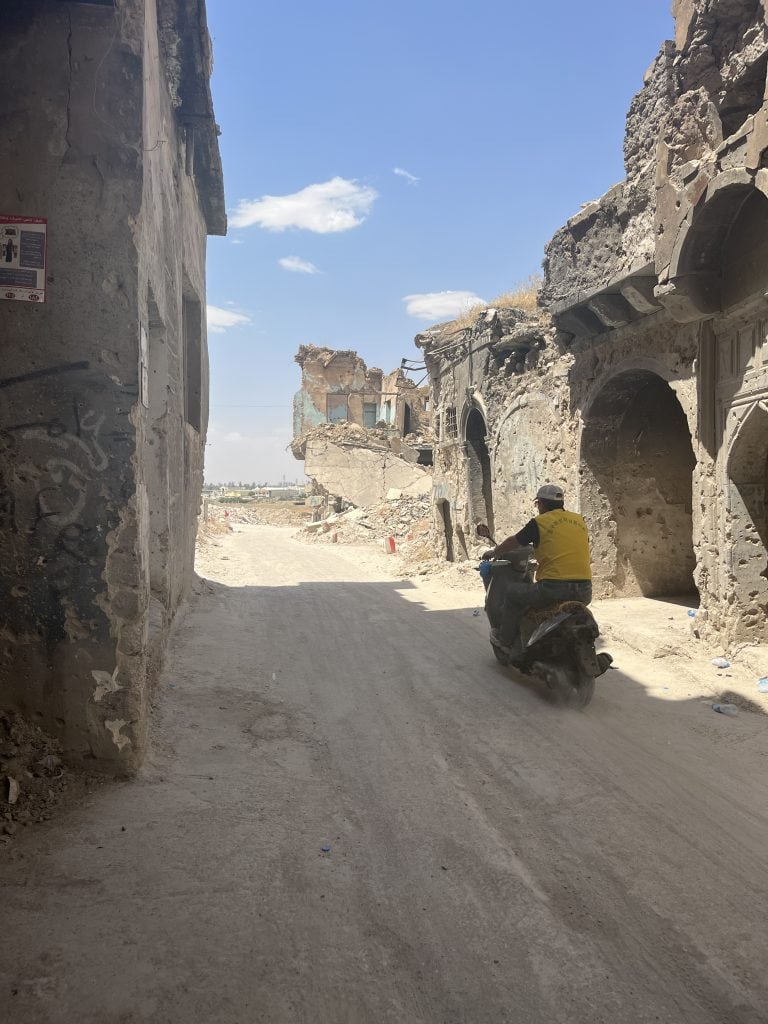
A view of an ordinary street in Mosul. Photo: Rebecca Anne Proctor.
“When a bomb explodes, the destruction takes seconds,” said Ariane Thomas, director of the Department of Ancient Antiquities of the Middle East at the Louvre. Thomas is working with Mosul Museum staff to conserve and reconstruct three large stone carvings (the Banquet Stele, Throne Base, and Nimrud’s Lion) and metal plate fragments recovered from the Balawat site, so that they can be exposed again.
Once the restoration work is complete, the goal is for the museum to resume its position as a cultural landmark for the citizens of Mosul, and more broadly, as a cultural center for the Middle East and the world.
“Rebuilding can take forever,” Thomas said. “The museum, like Mosul, will never be the same again.”
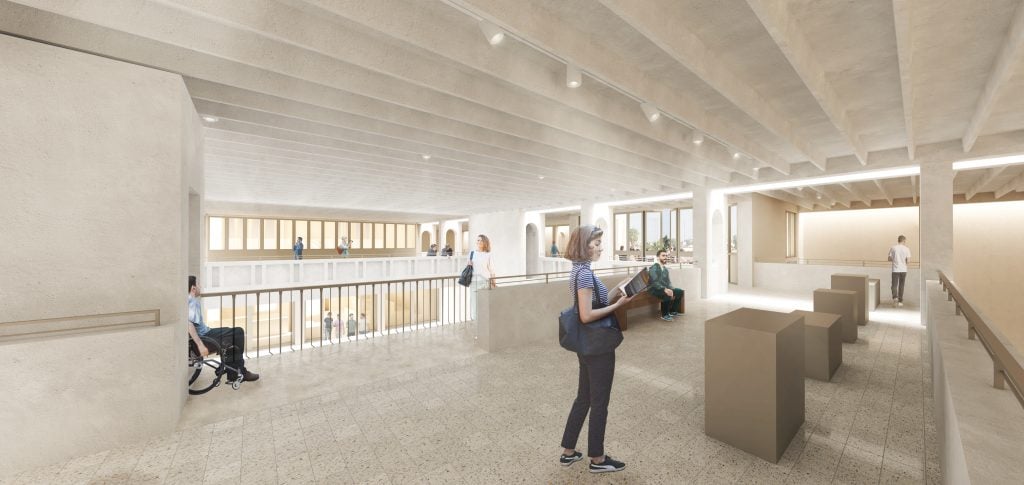
A visualization of the reconstructed mezzanine of the Mosul Cultural Museum with a view of the main entrance. Photo: Courtesy of Mosul Cultural Museum.
More trending stories:
Follow Artnet News on Facebook:
Want to stay one step ahead of the art world? Subscribe to our newsletter to receive breaking news, revealing interviews and incisive reviews that move the conversation forward.
